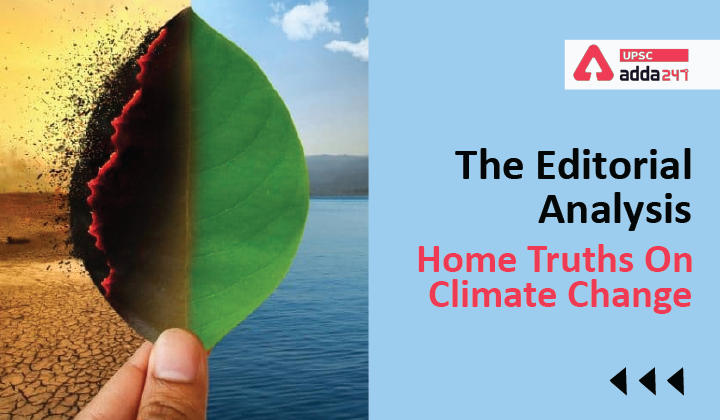Table of Contents
Relevance
- GS 3: Conservation, environmental pollution and degradation, environmental impact assessment.
COP 26
- In the recently held COP 26 at Glasgow, UK, developed countries put the blame of carbon emission on the developing countries like India and China.
- The developed countries, at Glasgow, pushed for the global acceptance of net zero emissions by 2050 while they should have led the race.
- The efforts by some countries to equate India and other similar countries as the worst emitter also stands flawed as according to carbonbrief.org, the U.S., Russia, the U.K., Japan and Canada account for 10% of the world’s population, but 39% of cumulative emissions”, while China, India, Brazil and Indonesia account for 42% of the world’s population but just 23% of cumulative emissions.

India: International commitments vs national laws
There were many issues which that India flagged in COP 26 but in our own country those issues are safely bypassed. Following are some of the examples:
- The Central Government tried to protect its sovereign decisions on the use of fossil-based energy requirements. However, in India, the government’s coal use policy is driven by its determination to hand over mineral resources, including coal, to the corporate sector.
- Even as India boasts of switching to solar energy to meet its emission control targets, it is privatising the coal industry, auctioning coal mines and encouraging open cast mines for commercialisation and export.
- India has not signed the land degradation agreement at COP 26 as the Government believes that the declaration linked trade to land use and trade falls under the purview of the World Trade Organization. However, at home, policies towards corporatisation of agriculture and the encouragement to contract farming undermines food security.
- Similarly, the Government was against the declaration on “recognise and (extend) support to smallholders, indigenous peoples and local communities”. However, at home, proposed Forest Policy of 2018, suggested amendments to the Forest Act of 1927, the amendments to the Forest (Conservation) Act of 1980, among others, make it easier to handover forests to the private sector.
Setting an example
- At COP 15, the Government committed to develop carbon sinks to the equivalent of 2 billion to 3 billion tonnes of CO2 by 2030.
- However, the Estimates Committee of Parliament in its 2018-2019 report said that to fulfil the promise of sequestering the CO2 target, 30 million hectares of land are required to plant indigenous trees.
- These trees should not be monocultures or plantations as was being done.
- Planting trees along national highways or along railway tracks as is being planned will be a very small component of the required target.
Way forward
- The government must reverse its pro-corporate policies reflected in privatisation.
- It is only with the cooperation of those who have protected forests that India can make a real contribution in the efforts to control climate change and be an example to the rest of the world.
Also Read:
| Green Day Ahead Market | World Energy Outlook 2021 | Coal Crisis in India | India’s Zombie Threat |
| Legal Entity Identifier | Fiscal Responsibility and Budget Management (FRBM) Act, 2003 | India International Science Festival (IISF) | 44th Constitutional Amendment Act |
| Gaganyaan Space Mission | International Solar Alliance (ISA) gets UN Observer Status | Democracy Summit: India Participated in first Summit for Democracy | One Commodity One Exchange’ Policy |




 TSPSC Group 1 Question Paper 2024, Downl...
TSPSC Group 1 Question Paper 2024, Downl...
 TSPSC Group 1 Answer key 2024 Out, Downl...
TSPSC Group 1 Answer key 2024 Out, Downl...
 UPSC Prelims 2024 Question Paper, Downlo...
UPSC Prelims 2024 Question Paper, Downlo...
